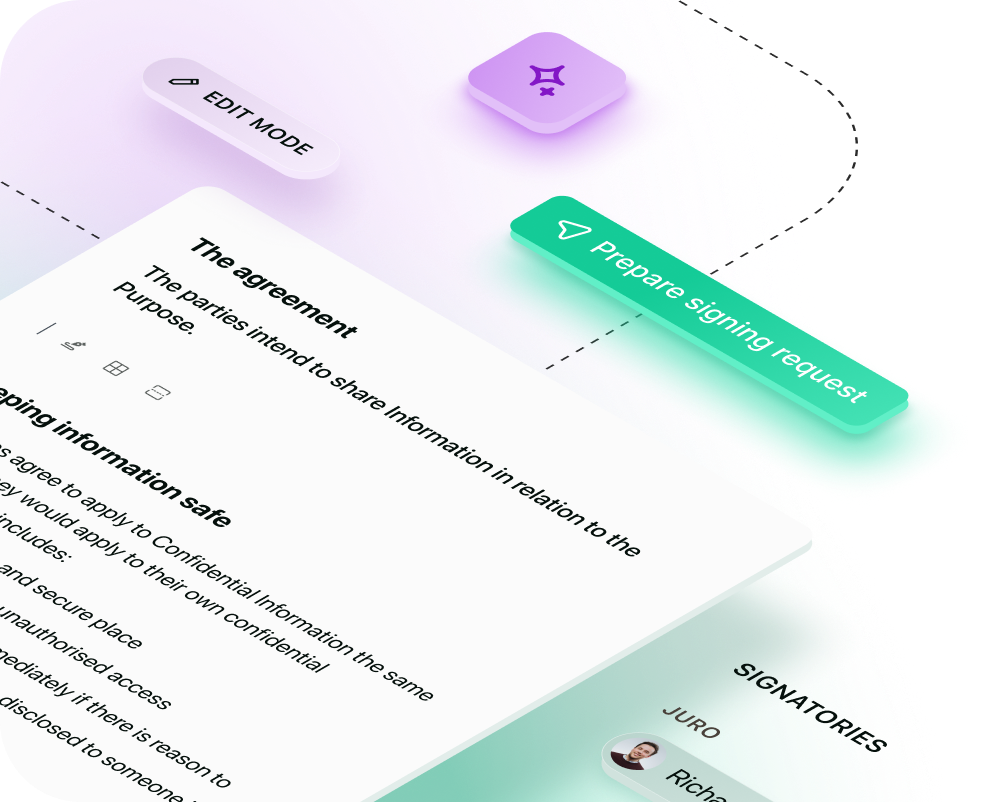Solutions
Customer Support
Resources
Leverage this free template to streamline the creation of Acceptable Usage Policies (AUPs) and empower your team to manage this essential contract with ease.




With the rise of digital platforms and online communities, AUPs have become a staple for many businesses. If you're not already familiar with them, it's time to dive in.
They play a pivotal role in ensuring that users understand and adhere to the guidelines set by a platform or service.
This article asks the questions, what exactly is an AUP, who needs them, and how can you craft one for your business?
An Acceptable Usage Policy, often abbreviated as AUP, is a document that outlines the rules and guidelines that users must agree to for access to a service or platform.
This type of contract is crucial for businesses that offer online services, platforms, or networks. It ensures that users understand what behaviors are acceptable and which are not, thereby maintaining a safe and respectful digital environment.
AUPs are essential for businesses that want to protect their platforms from misuse and ensure a positive experience for all users.
They cover aspects like content posting guidelines, prohibited activities, and the consequences of violations.
While they might seem straightforward, crafting a comprehensive AUP is crucial to prevent potential legal disputes and maintain a brand's reputation.
.avif)
An acceptable usage policy can be appropriate across a variety of circumstances, which may include:
Typically, legal teams or consultants draft AUPs, but they often collaborate with IT, security, and community management teams. The combined insights ensure that the AUP is comprehensive and addresses all potential issues.
A traditional AUP should include the following:

Creating an Acceptable Usage Policy (AUP) comes with its unique set of challenges. One of the primary difficulties is ensuring that the policy is comprehensive, covering all potential misuse scenarios without being overly restrictive or ambiguous.
As technology and user behaviors evolve, the AUP must be regularly updated to address new challenges, which requires continuous monitoring and foresight.
Striking a balance between user freedom and platform security is another challenge, as overly stringent rules might deter users, while lenient guidelines could compromise platform integrity.
In addition, with the global nature of the internet, ensuring that the AUP is compliant with varying regulations and cultural norms across different regions can be daunting.
This means that effectively communicating the policy to users and ensuring their understanding and compliance, especially when updates are made, adds another layer of complexity to the process.
Modern businesses can benefit from automating the creation and management of AUPs. Automated templates, like the one suggested here, can simplify the process, ensuring that AUPs are always up-to-date and compliant. Automation can also make it easier to disseminate updates to users and gather their acceptance.
Managing acceptable usage policies shouldn't be a maze - they should be straightforward.
With Juro's intuitive contract management software, you can simplify every aspect of the policy process, from drafting and updating to user acknowledgement and ongoing policy management.
With Juro, there is no challenging document retrieval or intricate tracking mechanisms. Automated templates allow you collaborate in real-time, secure cloud-based storage and achieve acceptable usage policy agreements up to ten times faster.
To learn more about how your organization can streamline the contract process with Juro's all-in-one contract management platform, hit the button below.
For SaaS contract templates, check out the ones below:
Juro is the #1-rated contract platform globally for speed of implementation.


Juro embeds contracting in the tools business teams use every day, so they can agree and manage contracts end-to-end - while legal stays in control.
Book your demo